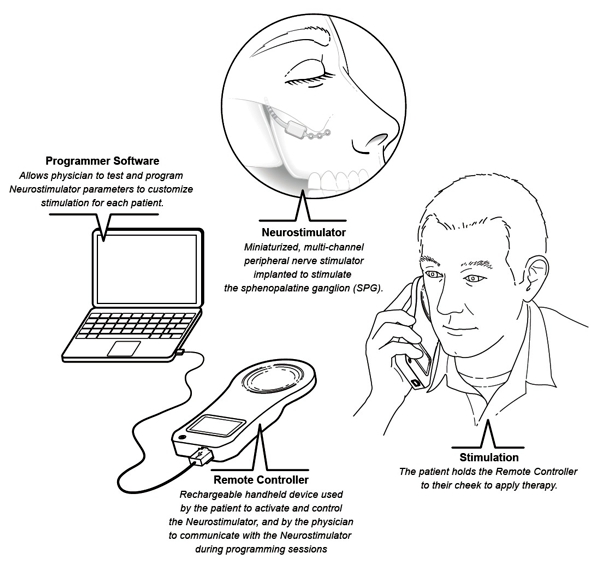in Medtech News
Implanted Neurostimulation Technology Provides Electronic Pain Relief for Cluster Headaches
Cluster headaches affect around 1 in 1000 people. They most are frequently described as agonising attacks of pain in one side of the head, which is often felt behind the eye.
While cluster headaches may not be as well known as migraines or other types of headaches, they are much more painful and can occur several times a day. They are so debilitating in fact, that sufferers have come to refer to them as “suicidal headaches”. There is no known cure for cluster headaches.
Current treatments to relieve symptoms include drugs such as injectable medications and inhaled oxygen, but some sufferers find that these medications are not viable options because of cardiovascular factors, whilst others experience severe side effects. In this instance, sufferers of cluster headaches may be offered surgery to permanently cut or chemically burn the sphenopalatine ganglion.
The sphenopalatine ganglion is a nerve centre that is located behind the sinus next to each of the nasal cavities. It is approximately 6mm long and contains synapses for sensory, motor and autonomous nerve fibres. It is frequently implicated in painful symptoms involving the face and head.
Recently clinical studies have demonstrated that SPG (sphenopalatine ganglion) stimulation with a neurostimulation system is highly effective in achieving fast pain relief in patients suffering from the debilitating pain of cluster headache and improving their quality of life. Autonomic Technology Inc, a medical devices company based in the US, focused their efforts on developing a neurostimulator for the treatment of cluster headaches known as the Pulsante™ System, which has received a CE mark and been approved for use in Europe.
The ATI Neurostimulator is a miniaturized, multi-channel peripheral nerve stimulator, that is implanted to the side of the face that suffers pain and stimulates the sphenopalatine ganglion. The sufferer will then use a rechargeable handheld device to activate and control the neurostimulator. The rechargeable device is also programmable so that practitioners can customise the stimulation for each patient.
Dr. Frank Papay, who conceived of the insertion procedure and location for the Pulsante neurostimulator, has recently been recognized as one of WebMD’s Health Heroes at an awards gala in New York City.

